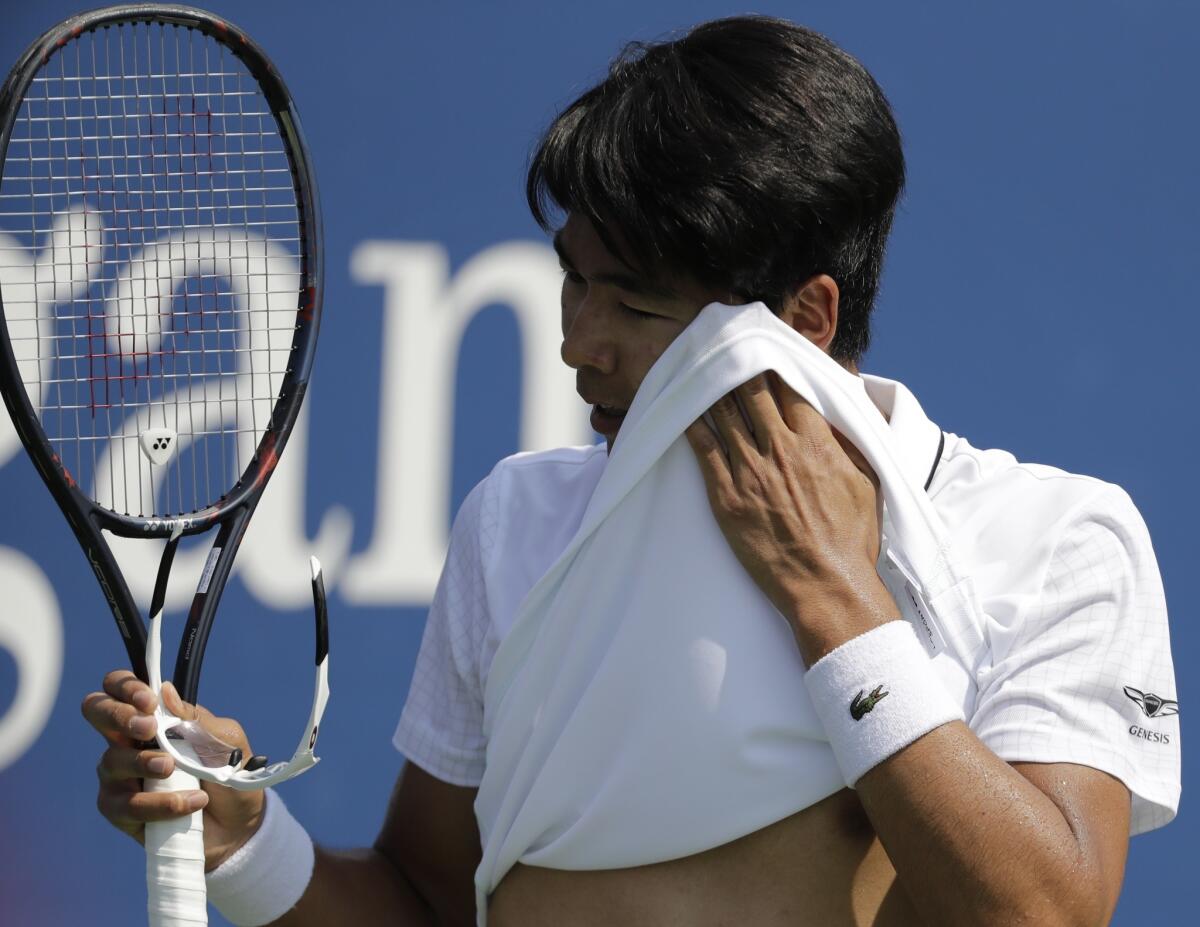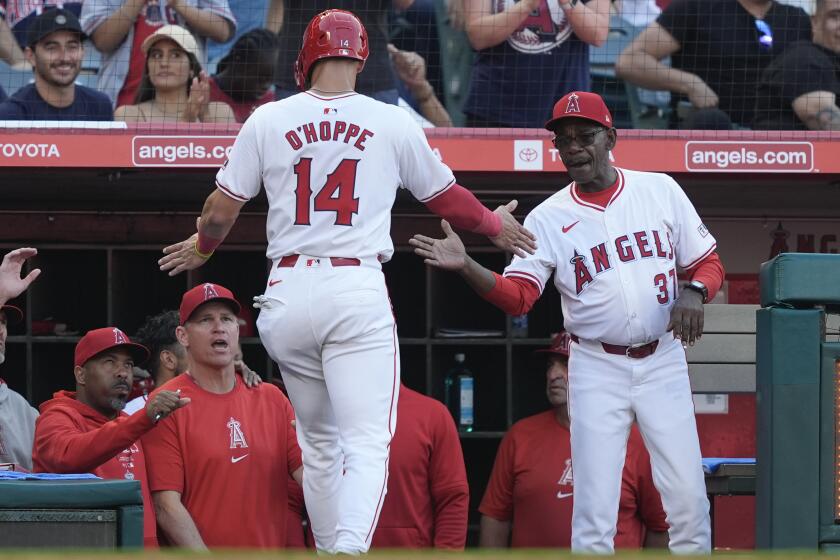Extreme heat, humidity could lead to roof closures at U.S. Open tennis
Responding to stifling heat and cloying humidity that blanketed the Billie Jean King National Tennis Center on Tuesday, executives of the U.S. Tennis Assn. decided to confer later in the day to decide if they will close the roof at Arthur Ashe and Louis Armstrong Stadiums.
The current policy dictates the roof can be closed only if there’s precipitation, but temperatures in the mid-to-high 90s and humidity upwards of 44% led them to consider a revision. The forecast calls for temperatures and humidity to be as bad, if not worse, on Wednesday.
“We may close the roof in both buildings in an attempt to bring down the ambient temperature,” Chris Widmaier, a spokesman for the USTA, said Tuesday afternoon.
However, the newly renovated Louis Armstrong Stadium is not air-conditioned, leaving in doubt how much relief players and fans would get if the roof were closed. Widmaier said the stadium was designed with natural ventilation.
Four male players retired from their matches on Tuesday. Ricardas Berankis had a heat-related illness, Stefano Travaglia had cramps and Marius Copil injured a leg; the reason for Leonardo Mayer’s retirement was not immediately clear.
The extreme weather conditions prompted the tournament referee, Brian Earley, to offer men’s singles players a 10-minute break between the third and fourth sets of matches on Tuesday. Widmaier said that was the first time such an option was made available to the men. Women’s Tennis Assn. tour rules automatically triggered a provision on Monday for women to take a 10-minute break between the second and third sets of their singles matches. Policy is less clear in these circumstances for the men’s tour, the Assn. of Tennis Professionals, Widmaier said.
The break was made available to male players only between the third and fourth sets. If not used after the third set, it could not be taken between a fourth and fifth set. No coaching was allowed during the break.

Many players complained about the uncomfortable conditions on Tuesday. Fifth-seeded Petra Kvitova of the Czech Republic, a 6-1, 6-4 winner over Yanina Wickmayer of Belgium, said she was glad to be first on Court 17 and glad that her match lasted only 72 minutes.
“I really tried hard not to play the third one in this kind of heat,” she said. “I knew it's going to be very hot, but I couldn't imagine how horrible the heat was in, so it was pretty difficult conditions. … When you are playing, you are not just really thinking about it. But when you stop for a while, then you feel the heat like from the ground, as well. Yeah, it was the humidity, as well, was there. We didn't really play, like, long rallies. I think that was kind of helpful.”
No. 7-seeded Marin Cilic of Croatia, the 2014 U.S. Open men’s champion, said the conditions were “very brutal,” and added that the adoption of a shot clock made things worse. Players must start their service motion within a 25-second countdown . “You have to, as well, obviously, have in mind that you are under the time to play under the shot clock, so it's not easy to prepare even after some long rallies,” he said after his opponent, Copil, retired in the third set of their match. Copil later tweeted that he had injured his left leg.
“For some matches, having long rallies, it's definitely difficult. It's very tough to get back the next point to continue to play,” Cilic said. “And, you know, I can see also the fans are looking for the shade. So definitely one of the most brutal days that we had so far this year since I'm here. You know, that's what makes it special for US Open, to play under this big humidity.”
Go beyond the scoreboard
Get the latest on L.A.'s teams in the daily Sports Report newsletter.
You may occasionally receive promotional content from the Los Angeles Times.







